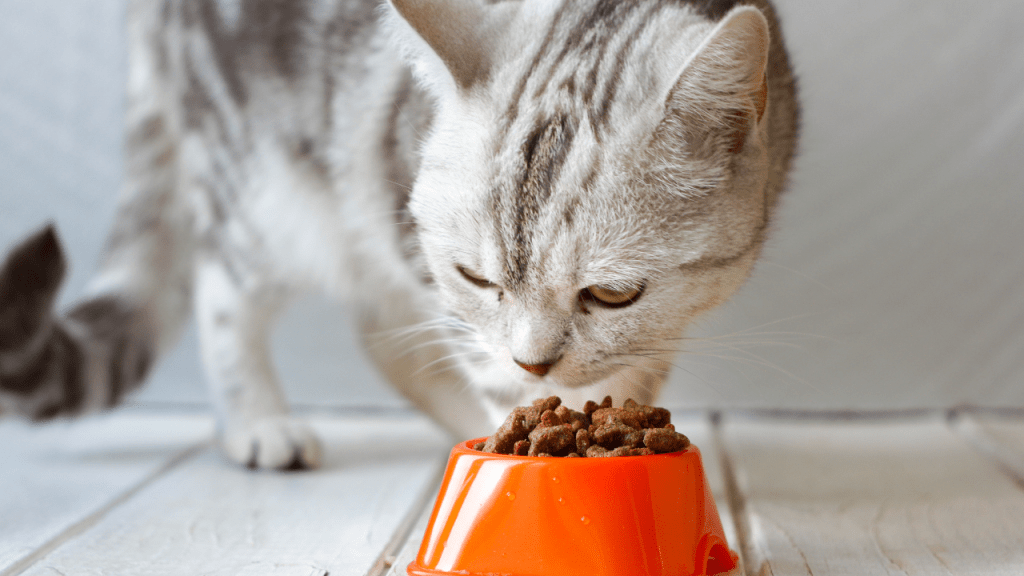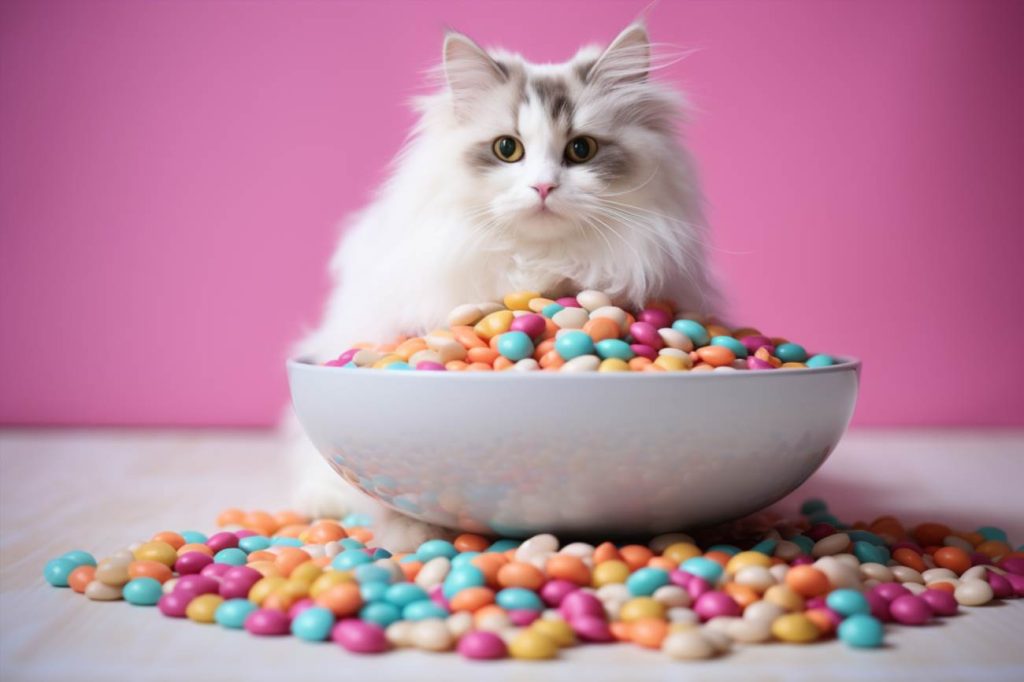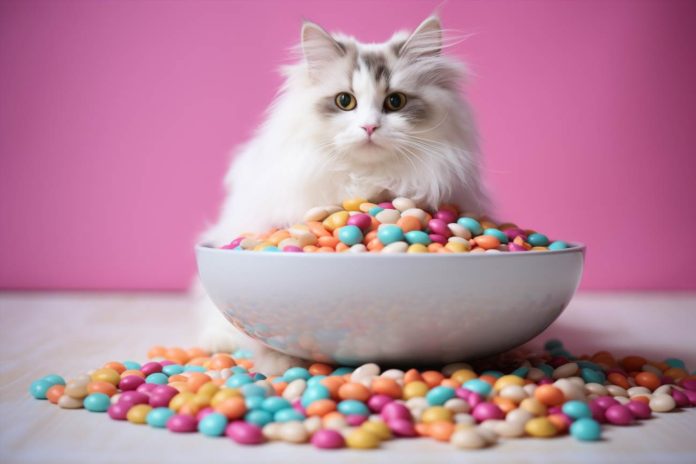Cats are not just pets; they are beloved members of our families. Ensuring that they receive the best care includes feeding them the right diet. In this guide, we will discuss the intricacies of feeding your cat, providing you with all the necessary information to make informed decisions about cat foods. From understanding their dietary needs to selecting the right pet food, this article covers everything you need to know.
Understanding Feline Nutrition: Why Cats Are Obligate Carnivores
One of the most critical aspects of feeding your cat is understanding that cats are obligate carnivores. This means that their diet must primarily consist of meat. Unlike omnivores, such as humans and dogs, cats rely on nutrients found only in animal tissues. This section will explore the biological reasons behind this, including the importance of taurine, arachidonic acid, and vitamin A, which are essential for a cat’s health and are found exclusively in animal products.
The Importance of Taurine in Your Cat’s Diet
Taurine is an amino acid that is vital for adult cats. Unlike other animals, cats cannot synthesize taurine in sufficient quantities, so it must be included in their diet. Taurine deficiency can lead to severe health issues such as blindness and heart disease. Therefore, ensuring that the cat foods you choose contain adequate taurine levels is crucial.
Why Animal-Based Proteins Are Essential
Animal-based proteins provide the essential amino acids that are required for various bodily functions. Cats have a high protein requirement, and these proteins help in maintaining muscle mass, supporting the immune system, and providing energy. Without enough animal-based protein, feeding your cat a balanced diet becomes impossible, which can lead to malnutrition.

Types of Cat Food: Wet Food vs. Dry Food
When it comes to feeding your cat, one of the first decisions you will face is choosing between wet food and dry food. Both have their advantages and disadvantages, and the right choice often depends on your cat’s specific needs and preferences.
Benefits of Wet Food
Wet food is often preferred by many cat owners because it is more palatable and contains a higher moisture content, which is beneficial for cats prone to urinary tract issues. The high moisture content helps keep your cat hydrated, which is particularly important if your cat doesn’t drink a lot of water on its own. Wet food also tends to have a richer aroma and flavour, which can be more appealing to fussy eaters.
Advantages of Dry Food
On the other hand, dry food is convenient, cost-effective, and can be left out for longer periods without spoiling. It also helps in maintaining dental health by reducing tartar buildup. However, it is essential to ensure that your cat drinks plenty of water if dry food is a significant part of its diet, as it does not provide the moisture that wet food does.
Commercial Cat Food: How to Choose the Right Brand
When selecting commercial cat food, it’s crucial to choose a brand that meets the nutritional requirements of your cat. Look for pet food that is formulated according to the guidelines provided by the Association of American Feed Control Officials (AAFCO) or similar regulatory bodies in your country.
Reading the Label: What to Look For
The label on commercial cat food can provide valuable information about the product’s nutritional content. Ensure that the food contains high-quality animal proteins, essential fatty acids, vitamins, and minerals. Avoid products with excessive fillers, artificial preservatives, and by-products that do not provide any nutritional value.
Understanding the Role of Grain-Free Cat Foods
There has been a growing trend towards grain-free cat foods in recent years. While some cats may benefit from a grain-free diet, particularly if they have food allergies or sensitivities, it is not necessary for all cats. Grain-free foods often replace grains with alternative carbohydrates such as potatoes or peas, which may not always be beneficial. It’s essential to consult with your veterinarian before making any significant changes to your cat’s diet.

Raw Feeding: Is It Right for Your Cat?
Feeding your cat raw meats is another option that has gained popularity. Proponents of raw feeding argue that it is more natural and closer to what a cat would eat in the wild. However, there are significant risks involved, including the potential for bacterial contamination and an unbalanced diet.
Benefits of Raw Feeding
Some cat owners report shinier coats, improved dental health, and better digestion when feeding their cats a raw diet. Raw diets typically consist of raw meats, organs, and bones, providing a more natural source of nutrients.
Risks and Precautions
However, raw feeding is not without its risks. The potential for contamination with bacteria such as Salmonella and E. coli is high, which can pose a risk not only to your cat but also to the humans in the household. Moreover, ensuring a balanced diet when feeding raw can be challenging, as improper ratios of meat, organs, and bones can lead to nutritional deficiencies or imbalances.
Feeding Your Cat: Establishing a Feeding Routine
Establishing a regular feeding routine is vital for maintaining your cat’s health. Cats are creatures of habit, and a consistent routine can help prevent issues such as overeating or weight loss.
How Often Should You Feed Your Cat?
The frequency of meals can vary depending on your cat’s age, health, and lifestyle. Adult cats typically thrive on being fed two to three times a day, while kittens may require more frequent meals. It’s essential to monitor your cat’s weight and adjust the amounts of food accordingly to prevent obesity or malnutrition.
Portion Control: How Much Should Your Cat Eat?
Overfeeding can lead to obesity, a common problem among domestic cats. On the other hand, underfeeding can result in malnutrition. The right amounts of food depend on various factors, including your cat’s age, activity level, and health condition. Always measure your cat’s food portions to ensure they are getting the right amount.
Incorporating Occasional Treats: When and What to Offer
Treats can be a great way to reward your cat, but they should be given in moderation. It’s important to choose treats that complement your cat’s diet and do not lead to weight gain or other health issues.
Safe Treat Options for Cats
Occasional treats such as cooked chicken, fish, or commercially available cat treats can be offered. It’s essential to avoid giving your cat treats that are high in fat, sugar, or artificial additives. Raw treats can also be an option, but only if you are confident in their safety and nutritional balance.
The Role of Treats in Training and Bonding
Treats can be an excellent tool for training and bonding with your cat. However, they should not replace regular meals and should be given sparingly to avoid upsetting the cat’s diet. Always consider the caloric content of treats and adjust the amounts of food in your cat’s regular meals accordingly.
Special Dietary Needs: Feeding Cats with Health Issues
Some cats have special dietary needs due to health conditions such as diabetes, kidney disease, or allergies. In these cases, it’s crucial to work with your veterinarian to develop a diet that meets your cat’s specific needs.
Diabetic Cats: What to Feed
For diabetic cats, a diet that is low in carbohydrates and high in protein is typically recommended. Wet food is often preferred for diabetic cats as it usually contains fewer carbohydrates than dry food. It’s also essential to feed your cat at consistent times to help regulate their blood sugar levels.
Cats with Kidney Disease: Dietary Considerations
Cats with kidney disease require a diet that is low in phosphorus and sodium but high in moisture. Specially formulated commercial cat food for kidney health can help manage the condition and prolong your cat’s life. It’s important to avoid high-protein diets unless recommended by your veterinarian, as excessive protein can exacerbate kidney issues.
The Role of Your Local RSPCA Branch in Supporting Pet Nutrition
Your local district branch of the RSPCA can be an invaluable resource in supporting your cat’s nutritional needs. They can provide guidance on choosing the right pet food, offer advice on feeding routines, and assist with any dietary concerns you may have.
How the RSPCA Can Help with Pet Food Assistance
In some cases, your local RSPCA animal centre may offer pet food assistance programs for those in need. These programs ensure that all cats, regardless of their owner’s financial situation, have access to high-quality nutrition.
Community Support: Engaging with Your Local Community
Engaging with your local community through the RSPCA can also provide opportunities to share knowledge and resources. Whether it’s participating in community events, volunteering at the animal centre, or simply sharing tips with other pet owners, being involved in your local community can enrich both your life and your cat’s.
Conclusion: Ensuring Your Cat’s Health Through Proper Nutrition
Feeding your cat the right diet is crucial for their overall health and well-being. By understanding their unique nutritional needs, choosing the appropriate commercial cat food, and establishing a consistent feeding routine, you can ensure that your cat lives a long and healthy life. Whether you prefer wet food, dry food, or a raw feeding approach, always consult with your veterinarian to make the best decisions for your feline friend.
Remember, cats are not just pets; they are family. Ensuring they receive the right nutrition is a vital part of caring for them. Use this guide as a resource to make informed decisions and give your cat the best life possible.

